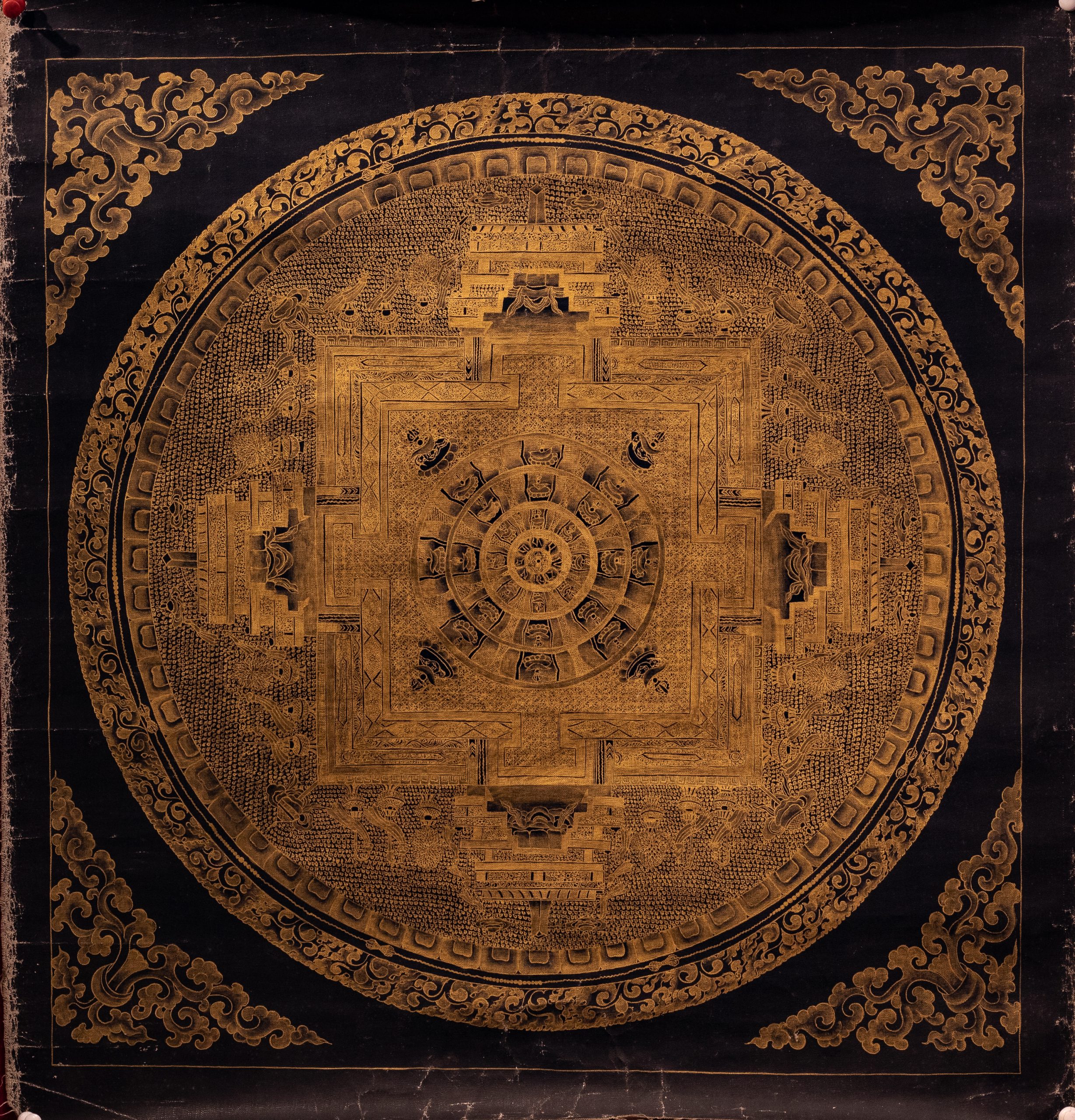Thanka Paintings 


Thangka not only possesses a wealth of cultural, spiritual and religious meanings but also a work of art to collect and invest. The foyer, hallways, living room, home library or office are all ideal places to exhibit your thangka.
But how to choose a Thangka? Let’s get started from these following aspects:
The Surface Canvas:
The canvas used for Thangka painting is different from plain paper or oil painting canvas. The manufacturing for the Thangka canvas is a laborious process that requires repeated application of the paste, sanding and polishing to reach meticulous finest and tenacity so that the thangka painting can be timeless and pass down for generations or even a thousand years.
The pigments:
The pigments used for our Thangka painting are all natural, with NO added chemical compositions. We use pure gold, silver and other finely crushed gemstones and animal glue as a medium to prepare pigments for thangka hand-painting. These mineral pigments come from natural deposits from the snow-capped plateau will provide our Thangka with fine weatherability and lightfastness as well as stability. The Thangka will withstand time and continue to exhibit lustre, vibrant colors and thermostability. The precious pigments used here display the revere and worship to the Bodhisattva, and of course it is also display symbol of wealth. With the usage of all natural minerals, real and genuine thangka will retain a bit of these funky smells and stench from the natural minerals; on the other hand, those applied by normal pigment do not have this particular smell.
The Thangka Painters
Generally, thangka painters come from family lineage and passed through generations of family traditions, but they could also be the temple monks or lamas. Point of Focus: “We respect the religious faith of each painters. Not all painters would want to leave his signature. Therefore, it does not mean that without a signature the Thangka is not painted by painter from a traditional lineage of family hereditary”. Each deity (gods & goddesses) has his or her own predetermined postures and sacred rituals. Given this basis, and aside from the rules and strict drawing rituals to follow, the rest of the drawing unfolds according to the techniques and aesthetics of the painter. Exquisite works of our painters have been auctioned off at Christie’s or collected in museums around the world. he golden age of a painter is around 30 years old according to the condition of his eyes. To protect and maintain the pinnacle of his work and for other reasons, laying down his paint brush at an early age is the norm. Note: Should a Thankga painting please your eye, consider it “Love at First Sight and Cherish It”. We specializes in Nepal Hand-paint Thangkas for many years. We can help you find one of a kind Thangka, not those ordinary ones tourist would come across. Caution: Presently, there is a common fraud technique. It Is to print the thangka first, then paint the colors. The colors are also very bright, shoddy, and this is what you will get for buying at a low price.
The Dimensions
It is a personal choice. Generally speaking, the price goes up by size. For example, a Padmasambhava painting with dimensions of 80cm X 100cm, takes at least 10 months to finish. On this scale, a painter’s productive life does not have too many 10 months.
Dharma Images 
These are the images of dieties drawn in the Thangkas: Buddhas, Buddhisattvas, protective deities, arharants and masters, etc….with each representing different meanings. For example, the Yellow Jambhala is considered the most popular and powerful of the Wealth Gods. Bhaisajyaguru the Buddha of healing and blessing for health. Avalokiteśvara is a bodhisattva who embodies the compassion of all Buddhas in East Asia. And Tibetans often worship the Padmasambhava at home. Ladies often worship The Green Tara (Sanskrit: Shyamatara; Tibetan: Sgrol-ljang).
The Price
Feel free to contact us for the price. If you are looking for Thangka for decoration, we advise that you choose one that looks nice after framing. Example: the mandala. If you are looking for a collection piece with increased value, we recommend you choose the best, with high monetary values.
Tibetan Style Framing 
You should find a professional framer specialized in Tibetan Framing. Should you need recommendation or have any questions, just ask the Host. Chinese Style Framing: A regular store that sells frames will do the job. To make your framed painting looks high-end and exquisite: choose the golden frame to show the majestic of the thangka. The single-layer paper jam is solemn and prudent, and the double-layer paper jam is magnificent.
